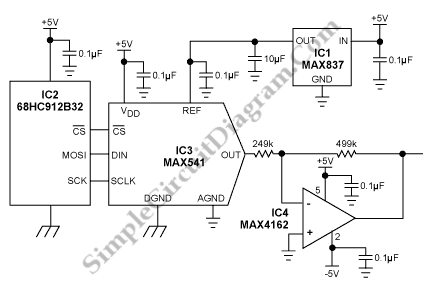Digitally Controlled Negative Voltage Supply
Despite the popularity of single-supply ICs, a negative control voltage is still required by some applications. Modern, inverted R-2R ladder DAC and op amp is the solution for this purpose. This approach offers lower supply voltages, higher speed, and smaller packages when compared with older DACs containing standard R-2R ladders.

An output swing from 0V to 2.5V is produced by the DAC (IC3). The DAC is operating with a 2.5V applied reference voltage from IC1 and driven by microcontroller IC2. To produce a 0V to -5V output, this output is inverted and amplified by Op Amp IC4. A software routine enables the microcontroller to generate a 0V to -5V triangle-wave output for test purpose.
Make a note that the output impedance of the DAC (IC3) is 6.25Kohm +- 20%. Buffer the DAC output before the IC4 inverting stage to eliminate system gain errors that are caused by the DAC’s output impedance. [Circuit’s schematic diagram source: maxim-ic.com]